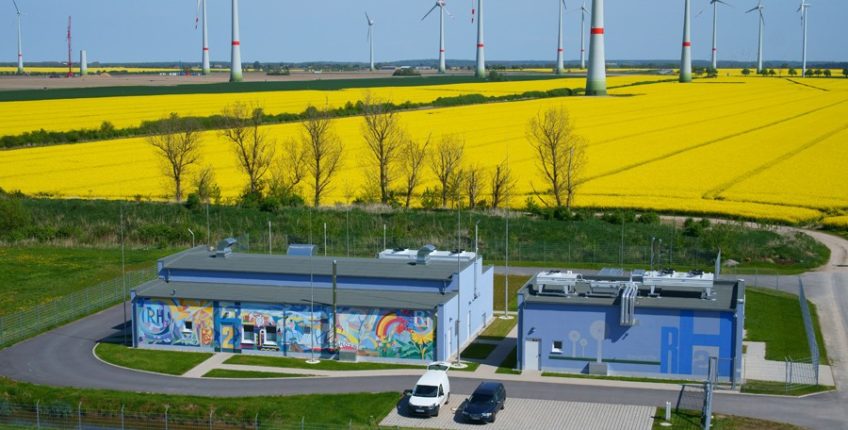The development of renewable energy sources on land and sea is leading to a decentralised energy supply. The energy produced by these methods must be optimised and integrated into the energy supply grid. This is exactly where the demonstration and innovation project RH2-Werder/Kessin/Altentreptow (RH2-WKA) comes in.
By integrating a CO2-free hydrogen storage facility within a wind park, consumers will gain access to wind energy on demand, regardless of time. In future, regenerative power plants will make an active contribution to increased network stability and to the integration of regenerative energy into the power supply network. The CO2-free wind-hydrogen system planned in the RH2-WKA project represents a milestone for sustainable industrial application due to its capacity: The wind park is comprised of up to 28 wind energy plants (partly > 7 mW) with a total load exceeding 140 mW. The high-performance wind park will provide clean energy for approximately 1000 households. In the first project phase, the hydrogen plant will power the wind park itself. It will boast 1mW performance and store the hydrogen at a pressure of 300 bar. The modular design of the hydrogen combined heat and power unit enables performance peaks of up to 250 kWel to be sustained for several hours. Further expansion to a regenerative power plant is planned for the future.
RH2® stands for Renewable Hydrogen. Project planning is being undertaken by WIND-projekt Gmbh, which is based in Börgerende, in the state of Mecklenburg-Pomerania, Germany.
The NIP-supported RH2 Werder/Kessin/Altentreptow demonstration and innovation project by the company WIND-project went into operation in September 2013. The alkaline electrolyser is run by surplus wind power that exceeds the intake capacity of the available electricity networks. The produced hydrogen is compressed, temporarily stored in gas cylinders and reconverted to electricity in combined heat and power plants upon demand. As soon as power is required — even when there is no breeze — the hydrogen combustion engines start and produce electricity via a generator. The stored amount of hydrogen is sufficient to run the combined heat and power plants at full power for two days and can thereby cover the own electricity requirements of a neighbouring wind park. As such, this project enables the perpetuation of wind power in electricity networks to thereby pave the way to allow the continual, largescale feeding in of power made using renewable energy, in the medium term. An expansion of the current project to incorporate a facility to feed in hydrogen to the natural gas network is being considered.
Funding Code
03BI105

